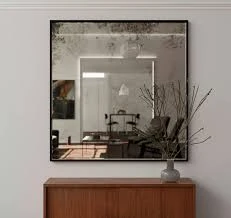

Understanding Low-E Glass A Sustainable Choice for Modern Architecture
In recent years, the push for energy efficiency has led to significant advancements in building materials, among which low-emissivity (Low-E) glass has emerged as a game changer in the construction industry. This innovative material not only enhances the aesthetic appeal of buildings but also plays a critical role in energy conservation, making it a popular choice for architects and builders aiming for sustainability.
What is Low-E Glass?
Low-E glass is coated with a thin layer of metallic silver or other oxide materials that reflect infrared light while allowing visible light to pass through. This specific treatment significantly reduces the amount of heat lost through windows, improving the energy efficiency of buildings. Essentially, Low-E glass works by minimizing the amount of solar heat gain in the summer and retaining indoor heat during the winter.
The technology behind Low-E glass has progressed significantly since its introduction. Early versions reflected too much visible light and compromised the aesthetic quality of windows. However, modern Low-E coatings are engineered to maintain a balance between energy efficiency and visual clarity, ensuring that buildings remain bright and inviting.
Benefits of Low-E Glass
1. Energy Efficiency One of the most compelling advantages of Low-E glass is its ability to reduce energy consumption. Buildings equipped with Low-E windows can maintain stable indoor temperatures, which translates into lower heating and cooling costs. According to various studies, incorporating Low-E glass can lead to energy savings of up to 30% to 50% compared to conventional glass.
2. Comfort Low-E glass significantly contributes to occupant comfort by minimizing drafts and cold spots around windows. The insulation provided by Low-E coatings helps maintain a consistent indoor temperature, providing a more pleasant living and working environment.

3. UV Protection In addition to temperature regulation, Low-E glass also blocks a significant portion of ultraviolet (UV) rays. This protects furnishings, artwork, and flooring from fading, thereby extending the lifespan of interior elements and reducing replacement costs.
4. Environmental Impact By reducing energy consumption, Low-E glass indirectly lowers greenhouse gas emissions associated with heating and cooling. Choosing Low-E glass contributes to a smaller carbon footprint, aligning with global sustainability goals.
5. Aesthetic Appeal Low-E glass is available in various styles and thicknesses, allowing architects and designers to incorporate it seamlessly into their designs. The advancements in coatings have also improved the visual clarity, enabling the creation of bright and inviting spaces without compromising functionality.
Applications of Low-E Glass
Low-E glass is versatile and can be used in various applications, from residential homes to large commercial buildings. Some common uses include
- Windows The most common application of Low-E glass, enhancing energy efficiency while providing clear visibility and aesthetic appeal. - Curtain Walls In commercial architecture, Low-E glass is often employed in curtain wall systems, offering stunning views along with thermal insulation. - Skylights Low-E glass is ideal for skylights, allowing natural light to flood spaces while controlling heat gain. - Doors Many modern doors feature Low-E glass inserts, enhancing the overall energy performance of the entryway.
Conclusion
In conclusion, Low-E glass represents a significant leap forward in building technology, combining energy efficiency, comfort, and aesthetics into one product. As architects and builders increasingly prioritize sustainable practices, Low-E glass will likely play an essential role in the future of construction. Whether it’s a new residential project or a major commercial development, choosing Low-E glass not only contributes to lower energy bills but also promotes a healthier planet for future generations. Embracing this technology may well be the key to constructing buildings that are not only visually appealing but also environmentally responsible.